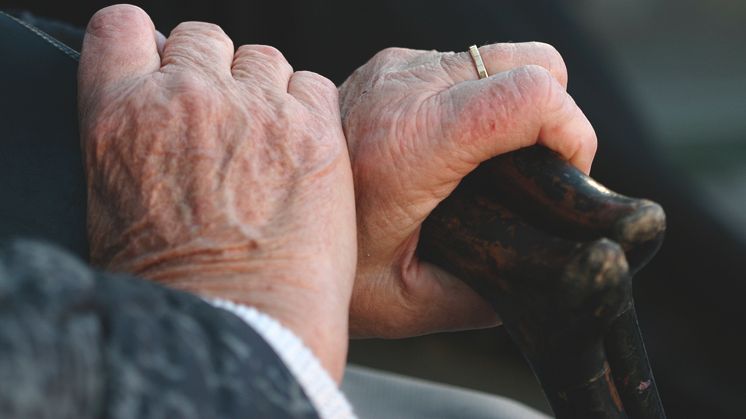
Blogginnlegg -
Agitated, anxious and alone - living with Dementia
Imagine not being able to recognise your own children. Not knowing where you live, where you are going or even how old you are. For many people suffering from Alzheimer’s disease and related dementias (ADRD) this is the reality. But with small means the everyday life’s struggle can be a bit more balanced – and one way of doing it is with light.
What is Dementia and ADRD?
Dementia is a syndrome in which there is deterioration in memory, thinking, behaviour and the ability to perform everyday activities. Although dementia mainly affects older people, it is not a normal part of ageing. It is caused by damage to brain cells - by i.e. Alzheimer’s disease, stroke or a head injury. Worldwide, around 50 million people have dementia, and there are nearly 10 million new cases every year, or one new case every 3 seconds. The anticipated growth of the diagnosis is set to triple by 2050.
Alzheimer's disease is the most common form of dementia and may contribute to 60–70% of cases. Dementia is one of the major causes of disability and dependency among older people worldwide. It has a physical, psychological, social, and economic impact, not only for the caretaker, but also on their carer’s, families and society at large. Dementia affects each person in a different way, depending upon the impact of the disease and the person’s personality before becoming ill.
Fear, confusion and restless nights
Persons with ADRD are often difficult for family caregivers to manage. Common symptoms of dementia in general is a constant wandering, during the day as well as the nights, anger, anxiety and personality changes. Since these patients don’t receive enough sleep, they are often more agitated during the day and experience more noticeable mood swings.
Dr. Barbara Lipska, a neuroscientist that herself suffered from a brain tumour, experienced some of the most common symptoms that ADRD-patients suffers from, and could after being cured from her tumour, give an insight in the everyday life of dementia patients.
- I had no time for anything — not even for the things that I really enjoyed, like talking to my children and my sister on the telephone, Dr Lipska says in an interview with NYT. I would cut them off midsentence, running somewhere to do something of great importance, though what exactly, I couldn’t say. I became rude, and snapped at anyone who threatened to distract me.
Her personality change and irritability also came from the fact that she had a hard time anticipating the basic needs of her body. There was no longer a build up towards hunger, fatigue, or even the need to urinate that she had once experienced.
Let there be light
Even though we consider ourselves modern people, our brains are really not that up to date. We are still biological creatures, affected by the shifts in nature. In health and care, light is especially important. Optimal use of daylight and electric light can be vital since light has a direct impact on the health of the patients.
Independent studies have shown that there is a direct relationship between the exposure to daylight and our feeling of well-being. Apart from its central role in vision itself, light is important for many physiological and psychological processes for us humans. It can improve concentration, affect our mood and our biological functions. Lack of light for long periods of time causes sleep problems, because the balance between the sleep hormone melatonin and stress hormone cortisol is disrupted. These hormones control the circadian rhythm, and lighting concepts that are in harmony with our internal clock support our well-being.
Rise and shine
Light therapy has shown promise as a nonpharmacological treatment to help balance abnormal sleep-wake patterns, and other associated symptoms, in patients suffering from ADRD. According to the UK Alzheimer’s society, studies has shown that bright light therapy can stabilize the mood for the patient. By regularly sitting under a bright light lamp of 10,000 lux, or brighter, it helps reset the brain. This is best done in the morning, shortly after waking, for 15 to 30 minutes. Many who utilize bright light therapy adapt it in the morning routine buy sitting under the bright light it when they watch television or enjoy breakfast.
Since the human circadian rhythm is maximally sensitive to short-wavelenght (blue) light, lower, more targeted lighting interventions for therapeutic purposes can be used. One study was designed to test the effectiveness of a tailored light treatment on measures of sleep quality, agitation and depression in those with ADRD living in nursing homes. But there are studies carried out to see if this could be adapted to people with the same conditions, living at home.
The reason this can all work, and ease the care situation for the different patients, is purely biological. The human brain needs the stimulation of daylight to produce the different hormones needed during the day. The circularity of the day is an innate part of our life, and we are programmed since many thousands of years to adapt our body after the shifting of the daylight. By regulating the natural circadian rhythm you can balance your mood, improve the overall well-being and also get a better sleep.
Text: Maria Vårenius

